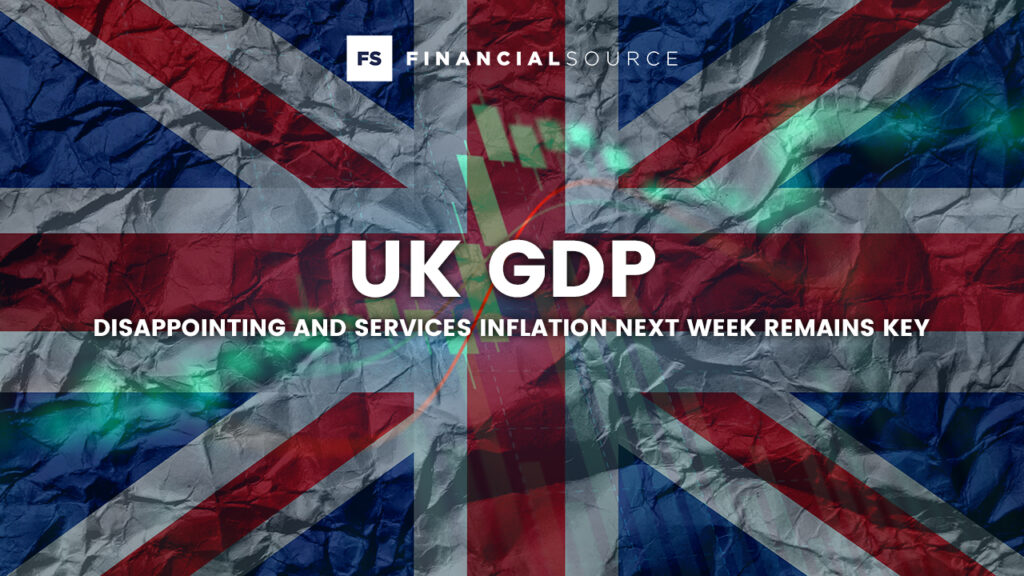UK GDP: Disappointing and Services Inflation Next Week Remains Key

After a post-election lull, the Bank of England’s recent 25 bps rate cut to 4.75% underscores its “gradual approach” to easing, aiming to balance persistent inflation with slowing growth. The cut, decided with an 8-1 vote on November 7, reflects the BoE’s cautious but forward-looking stance as inflationary pressures persist. Revised forecasts now see higher inflation through 2025, while growth expectations have softened, underscoring the BoE’s careful navigation of economic challenges.
Understanding the Latest GDP Slowdown
Q3 GDP growth was a lackluster 0.1%, a sharp drop from previous quarters and disappointing relative to optimistic budget projections. Yet, the BoE is unlikely to place too much weight on these figures. Recent GDP numbers have been erratic, skewed by volatility in manufacturing and industry, while consumer-facing services—such as retail, hospitality, and leisure—grew by 0.5% over the summer. These services are a more reliable indicator of domestic demand, suggesting underlying resilience in the UK economy is still there,
The BoE, focused more on inflationary risks, sees this recent growth slowdown as part of a broader adjustment. Their view is supported by high-frequency survey data, which shows smoother economic trends than the headline GDP numbers suggest. The takeaway: while the latest GDP figures seem underwhelming, they don’t fundamentally alter the BoE’s view of the economy’s trajectory.
Services Inflation Remains the Core Concern
For the BoE, services inflation remains the focal point, with incoming data next week likely to shape December’s decision. Progress has been slow here, and with services inflation projected to hover around 5% before moderating in spring, the BoE is expected to pause in December, followed by another potential rate cut in February. Governor Bailey’s comments reflect this nuanced approach: while gradual rate cuts are likely, the Bank will remain vigilant for any signs of stubborn inflation.
Looking Ahead: Growth, Wages, and Fiscal Stimulus
The BoE’s current projections see modest growth in the 0.2-0.3% range through winter, supported by real wage growth, which remains above inflation. Wages, particularly average weekly earnings, grew 4.3% year-on-year in September, outpacing inflation and bolstering household spending power. However, inflation is expected to tick up as well which should limit any gains.
Next year’s budget is expected to boost growth, with the Office for Budget Responsibility projecting an additional £60 billion in spending. However, whether this fiscal stimulus will translate into actual economic momentum remains uncertain, as deployment challenges could slow the impact of increased capital spending.
The Jobs Market: A Growing Risk
The greatest risk to the BoE’s outlook may come from the labor market. If employment declines accelerate, this could dampen growth through 2025, forcing the BoE to reconsider its gradual approach to easing.
In conclusion, the BoE remains focused on managing inflation carefully while navigating a complex economic environment.. The BoE’s path forward will be shaped by upcoming services inflation data, labor market developments, and the effectiveness of fiscal policy, with all eyes on December’s meeting for further guidance. STIR markets are currently pricing in an 81% chance of a hold.